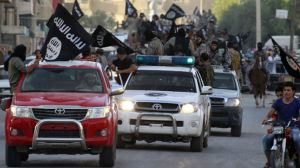
The public reaction has been mixed. For example, the All Pakistan Ulema Council (APUC) hastened to call the Islamic State of Iraq and the Levant un-Islamic. Stressing that the killing of innocent people is contrary to the teachings of Islam, the APUC advised young people not to join extremist organizations, since ISIL incites violence. The Ulema take the position that only dialogue is the solution to all problems (including interfaith ones), claiming that in Islam there is no room for extremism and terrorism, and no group or individual can be empowered to kill innocent people.
The position of the TMP was cleared up a little later. Initially, on October 4, 2014 the TMP “supported all Islamist militants fighting in Syria and Iraq against Western interests”. But in a statement on October 6, 2014 the press-service of the TMP clearly explained its position: “… we do not support any specific groups in Syria or Iraq; all groups are respected, and they are our brothers”. TMP has no plans at present to join the IS.
Currently, among the militants based in Pakistan, there is a process of further disengagement along ethnic lines. Another impetus was the military operation in North Waziristan (NW) in the Pashtun tribal area near the Afghan border (the offensive officially began on June 15, 2014). The problem was, according to the press service of the Standing army, how to destroy the foreign fighters who had settled in the country. As a result of the successful actions of the federal army, by the middle of September 2014 up to 90 percent of the tribal areas were freed from terrorists, and most of their hiding places, bases, training camps, military infrastructure, etc. were destroyed. Many of them died or were captured, some managed to escape across the border into neighbouring Afghanistan.
The ideological basis of the joint (the Pakistani Taliban and foreign fighters) acts of terrorism and warfare was the armed struggle against the “infidels” occupying Muslim lands. Over time the differences between local rebels from the Pashtun tribes and foreign militants, particularly Uzbeks, began to show. The Militants of the TMP are mostly ethnic Pashtuns, originally from the Federally Administered Tribal Areas (FATA). Their main mission is to protect their ancestral lands from attacks by other tribes.
The antiterrorist campaign by the USA/NATO in Afghanistan in September 2001 gave rise to a new challenge for the Pashtun tribal areas.The Federal Pakistani army repeatedly invaded FATA areas (2002 – 2005) to eliminate foreign fighters and local insurgents. The latter supported the Afghan Taliban, Mullah Omar’s followers, and the Emir of the Islamic Emirate of Afghanistan (1996 – 2001), who fled into Pakistan (Baluchistan Province) after American and British troops entered Afghanistan in September 2001.
The Pakistani Taliban still continue to follow the instructions of the ideological leader of the Afghan Taliban Mullah Omar. In his turn, his is close to some of the most senior leaders of al-Qaeda. The Punjabi Taliban have reaffirmed their commitment to Mullah Omar. Part of the militants from the inner regions of Pakistan refused to undertake subversive activities. It is another matter with foreign fighters, particularly those from the Islamic Movement of Uzbekistan (IMU). For them war is a way of life, a business in blood.
The IMU, founded in the late 1990s, was geographically based in the territory of Afghanistan and in the zone of the Pashtun tribal areas of Pakistan. Uzbek militants have been through years of terrorist attacks and clashes with the Pakistani army. The IMU is composed of somewhat “volatile” units.
In September of 2014 as a result of the military operation of the Pakistan Army in NW, the IMU militants, deprived of their usual hiding places, headed in two directions: cross-border crossings into Afghanistan, and later into the states of Central Asia (Turkmenistan and Tajikistan), and the second – the Middle East. The Uzbek militants, supporters of Al-Qaeda, backed the militants of the “Islamic state”, who control large areas of Syria and Iraq. Usman Gazi, one of the leaders of the Islamic Movement of Uzbekistan in late September 2014 speaking “… on behalf of all members of the movement in accordance with their sacred duty,” said: “We are in the same ranks as the Islamic State in this ongoing war between Islam and non-Muslims.” He welcomed the Islamic State for refusing to recognize state borders and expressed the hope that the group will soon take control of Palestine and the Muslim holy cities of Mecca and Medina. “The Islamic state is free of any patriotic or nationalist agenda … you can see Arabs, Chechens, Uzbeks, Tajiks, Kyrgyz, Russians, and many English-speaking Muslim Mujahideen (fighters) in its ranks.” said Usman Gazi.
The further separation of groups of foreign fighters from the Pakistan Taliban attests to a significant reduction in the number of militants in the country; their ethnic identity, location, etc. They suggested that a potential alliance between the Afghan / Pakistani Taliban and the Islamic State would greatly enhance the combat power of the ISIS militants and thus expand their influence in the region.
This led to yet another challenge for the United States and the Western powers in the Middle East. In practice, their forces gradually concentrate around two centres: Al-Qaeda in the West Asia region and militants from the Islamic State in the Middle East. Currently, their goals are the same – the war against the “infidels”, but in different geographical areas.
Natalia Zamarayeva, PhD in History, Senior Research Fellow, Department of Pakistan at the Institute of Oriental Studies in the Russian Academy of Sciences, exclusively for the online magazine “New Eastern Outlook”.